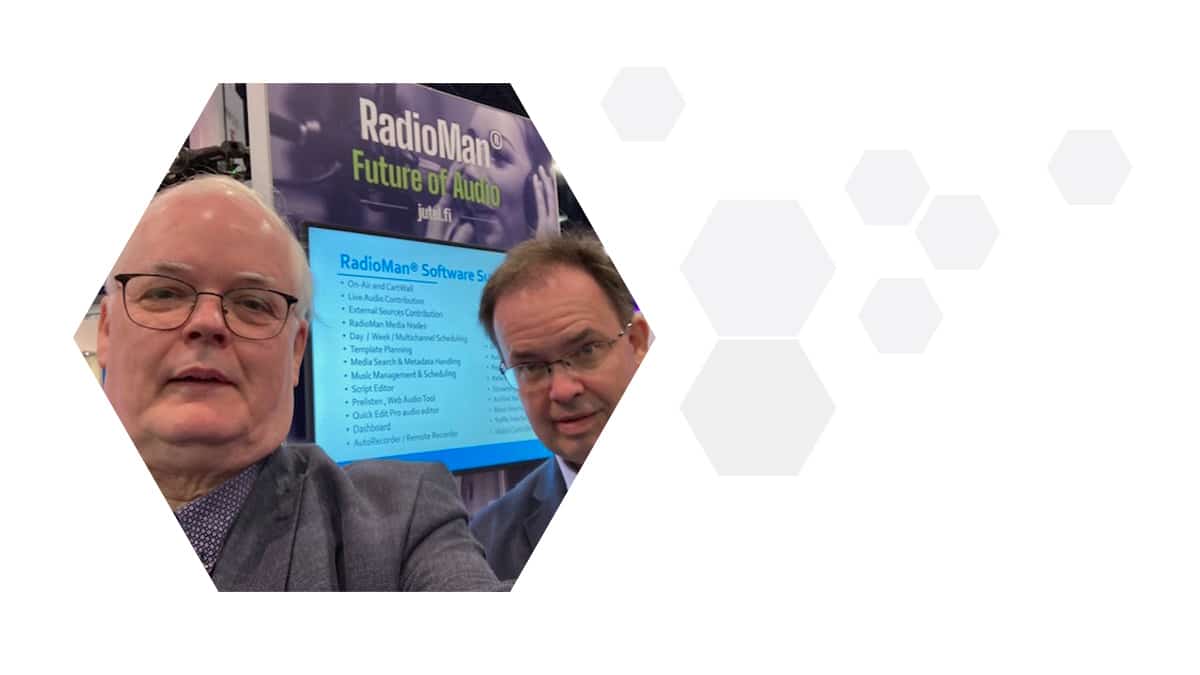According to Jorma Kivelä, chairman of Jutel RadioMan, the future of radio is, to a large degree, already here, and they’ve been planning for it for years.
RedTech: Where do you see opportunities to secure the future of radio?
Jorma Kivelä: Audio is the big future. Audio stories are becoming more and more popular. Terrestrial radio is still going strong, but we must also prepare for the future. With future radio, you can produce and distribute audio stories as linear broadcasts, podcasts and on-demand services. You can manage new kinds of hybrid programming containing podcast stories, music and live via terrestrial radio, web radio or on-demand channels. With future radio, you can generate audio and reach your audience anywhere.
Cloud-based production and distribution architecture enables new distribution channels — mobile, cars and recommendation-based and profile-based on-demand services. New business models evolve to broadcast business — new ad-hoc distribution networks, temporary channels and channels based on brands, not just on physical infrastructure or location.
RedTech: What inspires your company to innovate?
Kivelä: Jutel has almost 40 years of experience in radio technology. It has been rewarding to be involved in technological development and still enjoy the basic concept of delivering audio information, enjoyment and entertainment to the listeners. We have been an early adaptor of broadcast technology for a long time. Starting with hardware-controlled CD automation and the first digital audio cards, Jutel introduced the Windows-based all-in-one editorial systems. After that came networked workstations, multichannel services and database-controlled audio matrixes.
With future radio, you can generate audio and reach your audience anywhere.
Jutel RadioMan was probably the first to adopt MOS-protocol integration for radio newsrooms. Jutel also built the world’s first commercial Ravenna-IP audio implementation. The latest innovations handle cloud-based audio management and distribution. Most inspiring for innovation are still all the persons and partners involved in the radio business. Radio has always kept its artistic atmosphere.
RedTech: How do your products make radio increasingly resilient, relevant and competitive?
Kivelä: With cloud-based RadioMan system architecture and services, you can cope with future changes. You can easily adapt to new distribution channels and methods, and easily interface to cloud-based social media development. Your operations can be location-independent with RadioMan, now and in the future.
RadioMan in the cloud helps you in catastrophic situations. Your radio show continues even if your studio goes down; you simply run your services from any PC or remote studio. The system in the cloud has an internal backup to build a complete replica of a station and distribution in minutes. Even if you lose connectivity to the cloud, playout continues according to the schedule from the cloud. You can also rely on Jutel’s services and support 24/7.
RedTech: What one piece of advice would you give those running radio stations today?
Kivelä: Terrestrial radio is going strong, but we must prepare for the future. In addition to changing business models, broadcasters must prepare for the increasing need for technological know-how. Remote operations, new distribution channels, AI-based advertising and data security topics must be managed by talented personnel and with service-based business models.
Cloud implementations are ideal for service-based business models where you don’t need to manage everything yourself. Cloud-based system implementation is fast, allowing you to start with a standard setup in the cloud. You no longer have to wait for all the infrastructure to be ready before testing and training.
RedTech: How do you imagine radio by the end of the next decade?
Kivelä: Content will still be king — sports, local news and topics, talents, interesting stories, good music, etc. The term “broadcast” is getting a new meaning — instead of a single medium like FM, there will be a multitude of distribution channels: terrestrial transmissions, 6G distribution to cars, mobile devices, intelligent speakers, on-demand, etc.
Part of the radio will still be linear programming, as this is the most convenient way to select and consume audio. The other will be personalized via AI recommendation systems, interactive audible user interfaces and customer feedback.
Production of good audible content is not going away. The most important topic will be how to offer, package and deliver the content. This is more a business model issue than a technical one, as the cloud makes practically everything possible already long before the next decade.
This Q&A was published in the 2023 edition of The Innovators. Read the entire issue here.

